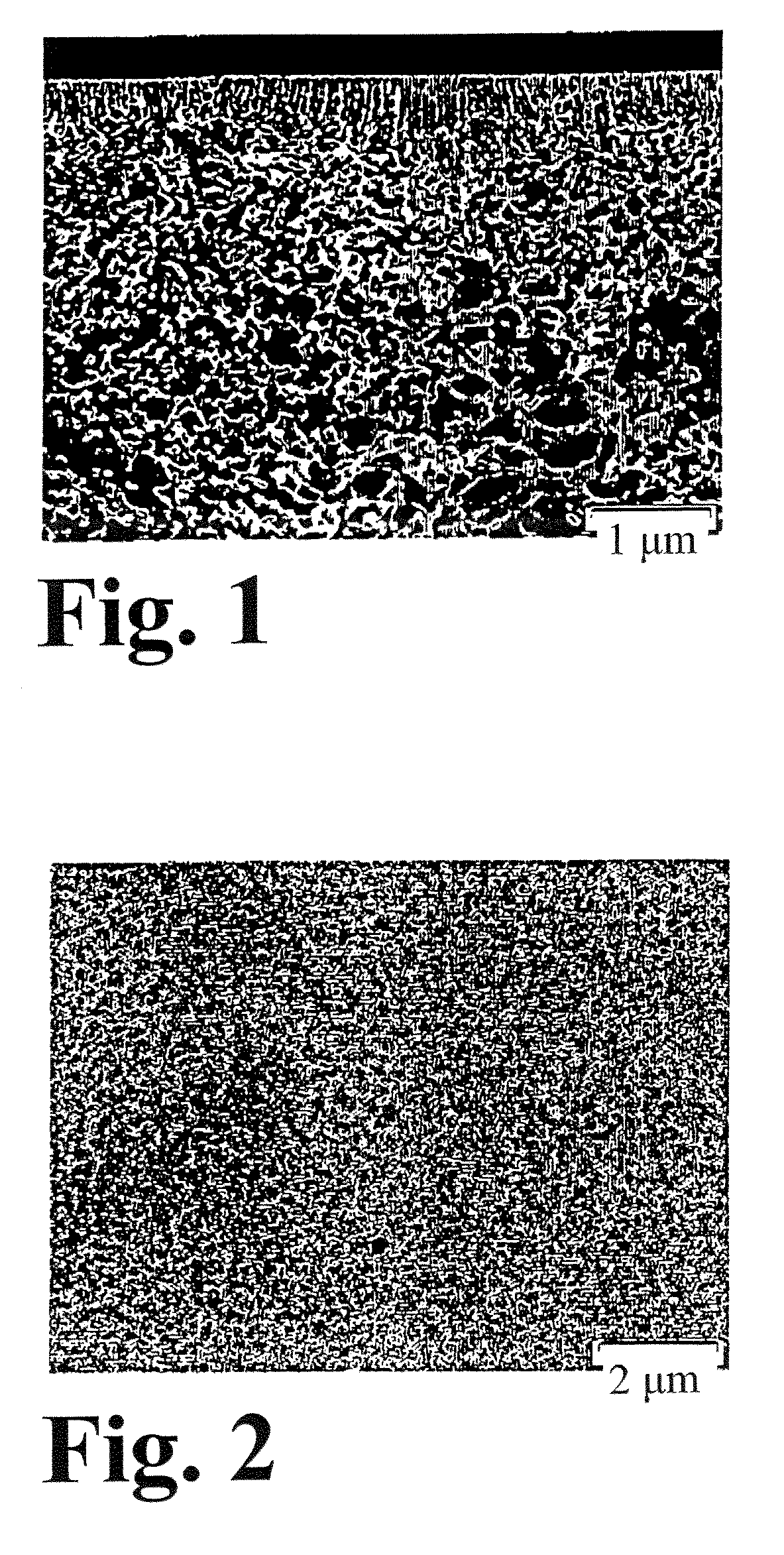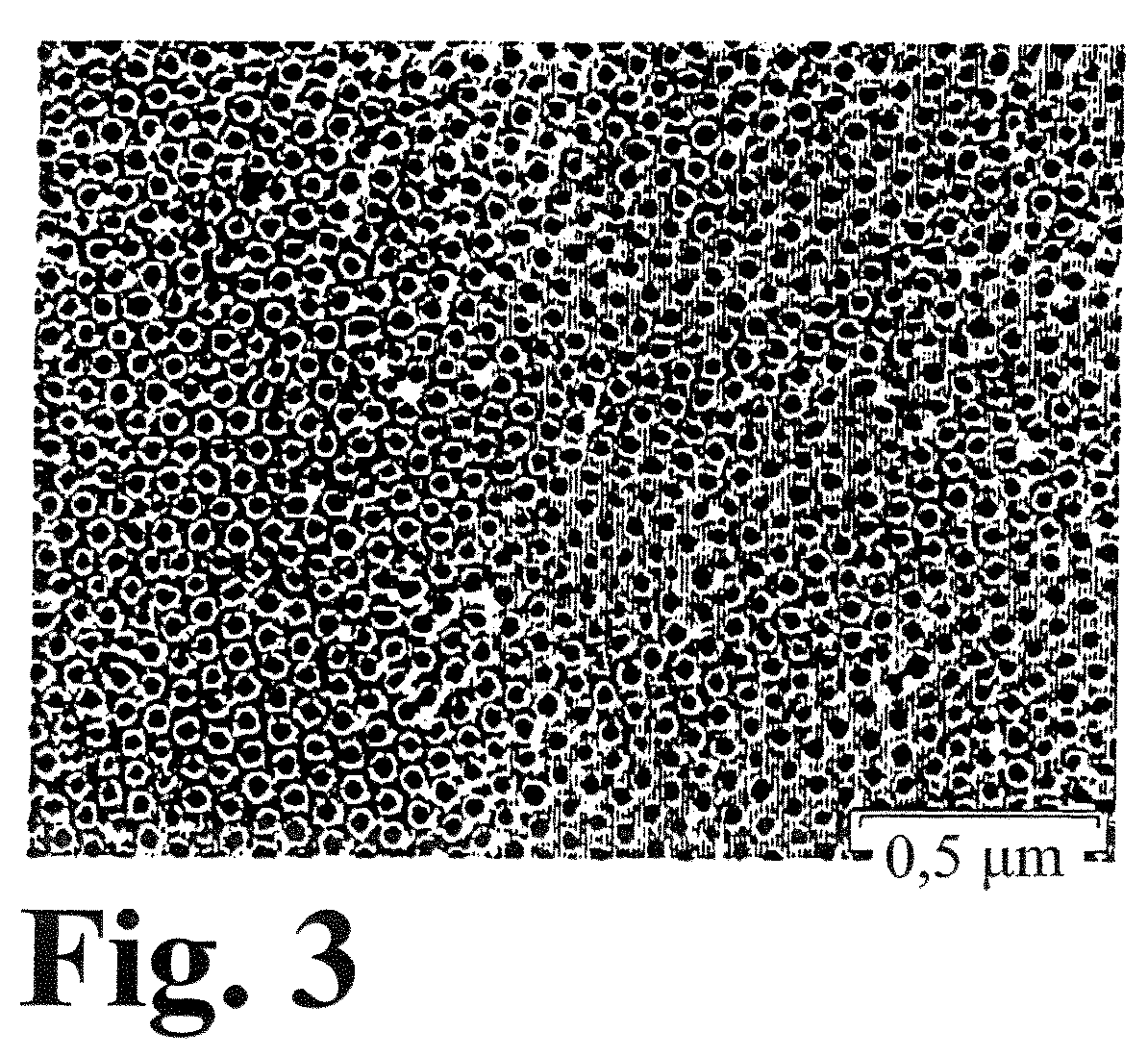Isoporous membrane and method of production thereof
a technology of isoporous membranes and membranes, applied in the direction of membranes, filtration separation, separation processes, etc., can solve the problems of difficult large-scale production of membranes, inability to produce stable, and tendency of membranes to so-called fouling
- Summary
- Abstract
- Description
- Claims
- Application Information
AI Technical Summary
Problems solved by technology
Method used
Image
Examples
example
[0035]The block copolymer polystyrene-b-poly-4-vinylpyridine is dissolved in a mixture of dimethylformamide and tetrahydrofurane to provide a casting solution. The composition of the casting solution is 20 wt.% polystyrene-b-poly-4-vinylpyridine (PS-b-P4VP), 20 wt.% tetrahydrofurane (THF), and 60 wt.% dimethylformamide (DMF).
[0036]The casting solution is spread out with a doctor knife to a 200-μm-thick film on a glass plate. After 10 seconds, the film is immersed in a water bath. After an hour, the film is removed and air-dried, yielding the membrane.
[0037]FIG. 1 shows the upper area of the cross-section of the membrane, magnified 20,000 times. The cylindrical pores are clearly detectible on the surface.
[0038]In FIG. 2, the membrane surface is magnified 10,000 times, and in FIG. 3, the membrane surface is magnified 50,000 times
[0039]In FIGS. 2 and 3, the surface pores of substantially uniform diameter with a high density can be detected.
PUM
| Property | Measurement | Unit |
|---|---|---|
| diameter | aaaaa | aaaaa |
| concentration | aaaaa | aaaaa |
| weight | aaaaa | aaaaa |
Abstract
Description
Claims
Application Information
 Login to View More
Login to View More - R&D
- Intellectual Property
- Life Sciences
- Materials
- Tech Scout
- Unparalleled Data Quality
- Higher Quality Content
- 60% Fewer Hallucinations
Browse by: Latest US Patents, China's latest patents, Technical Efficacy Thesaurus, Application Domain, Technology Topic, Popular Technical Reports.
© 2025 PatSnap. All rights reserved.Legal|Privacy policy|Modern Slavery Act Transparency Statement|Sitemap|About US| Contact US: help@patsnap.com


